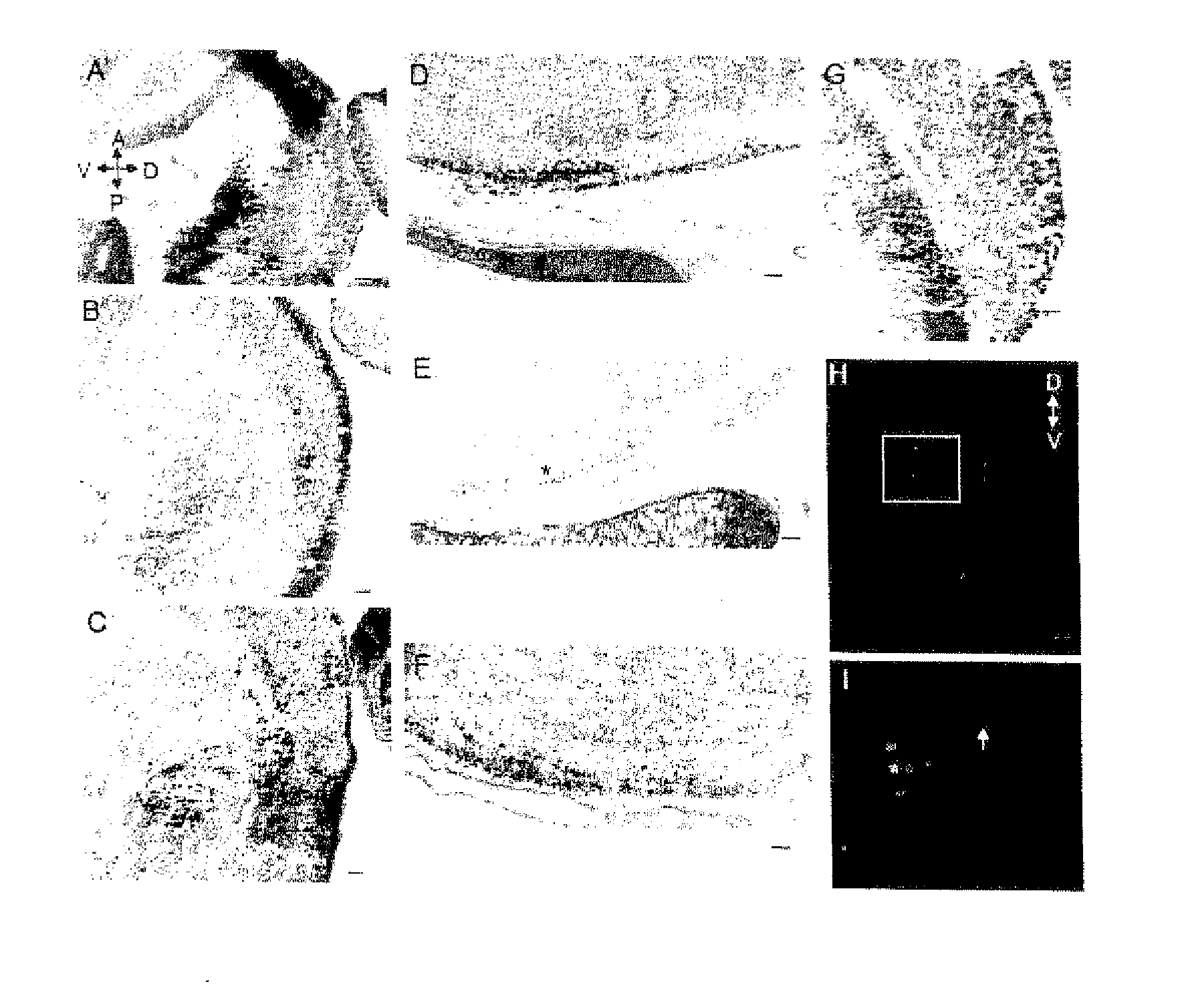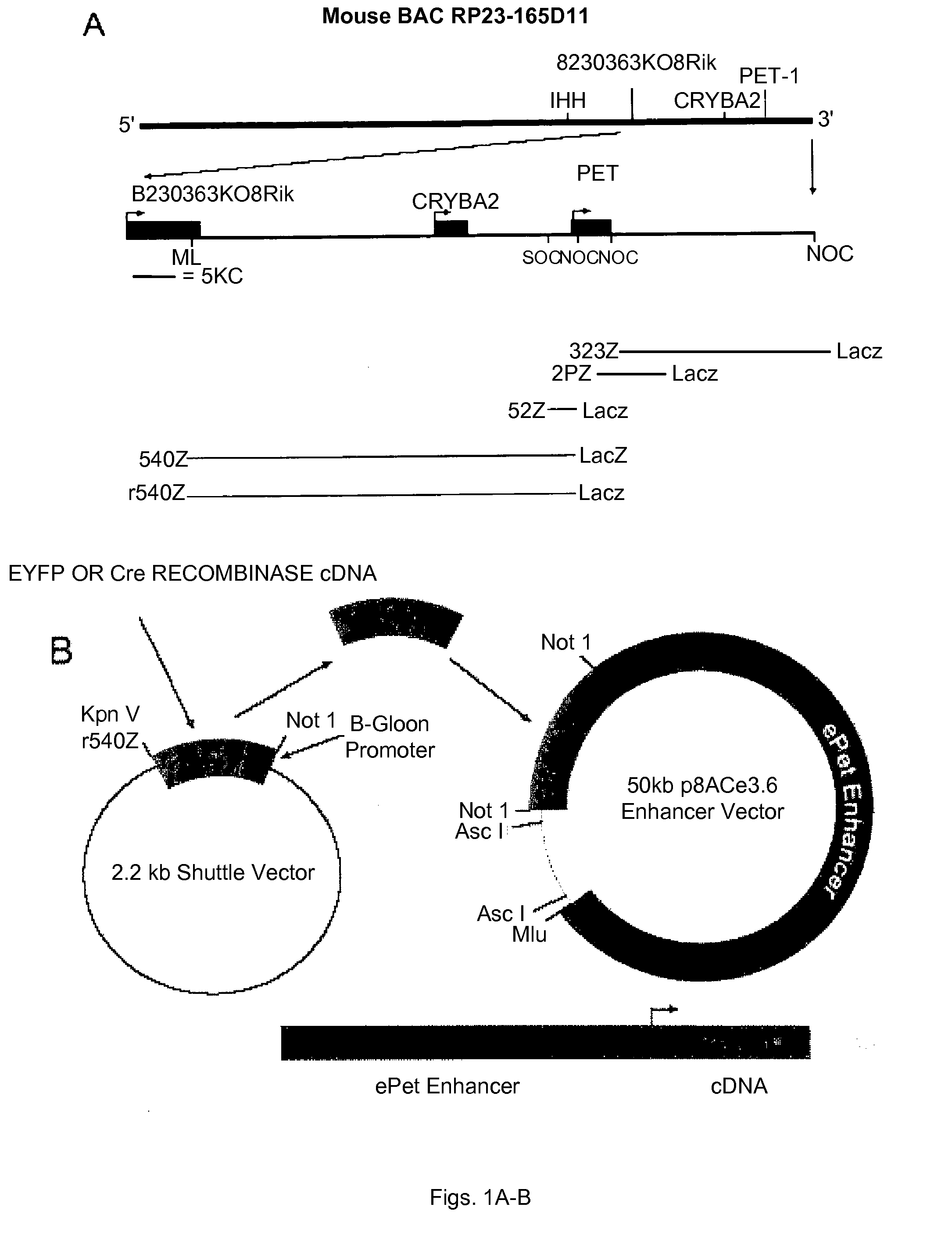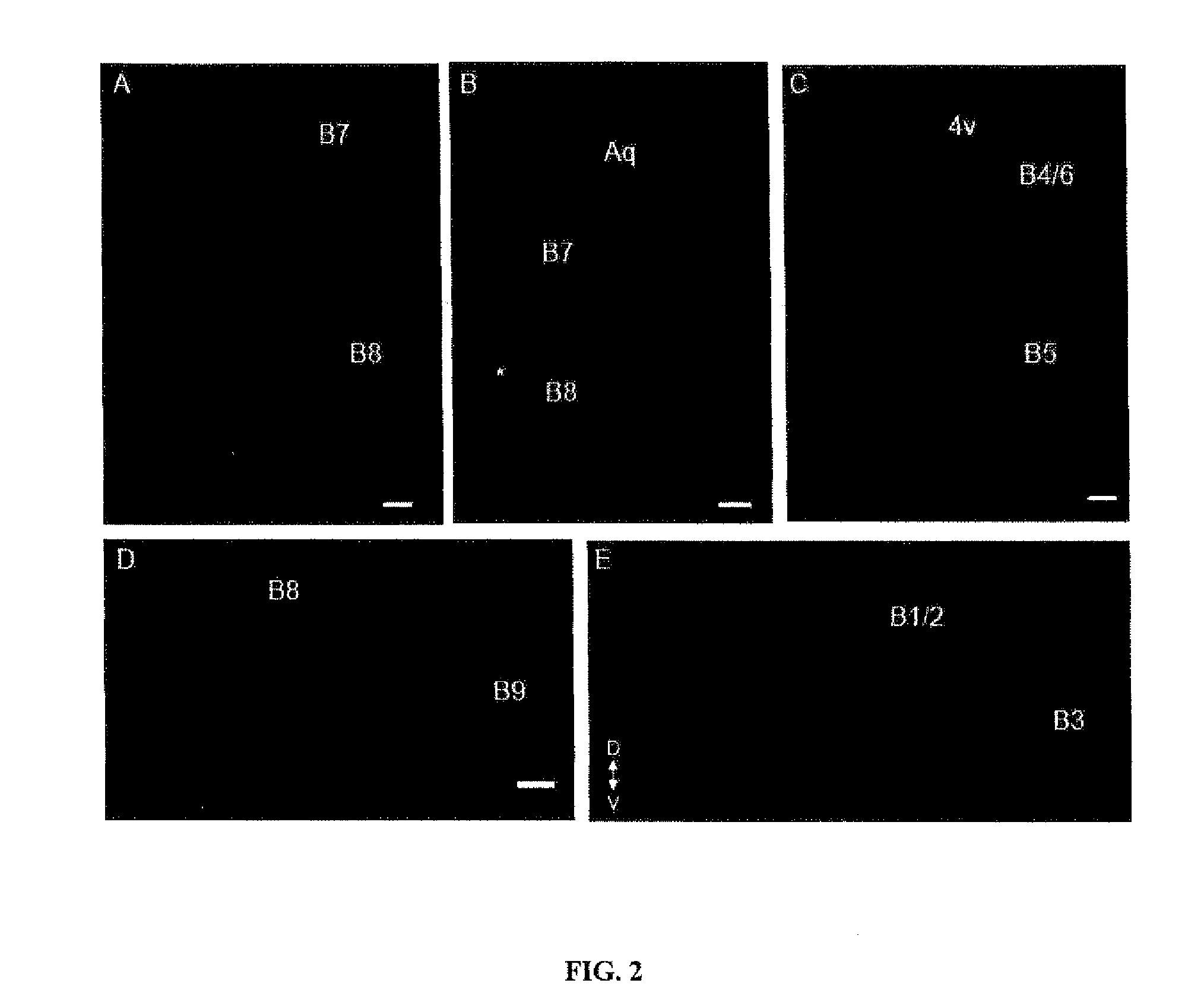Modulation of serotonin neurons involving the pet-1 transcriptional control region
a transcription control and serotonin technology, applied in the field of serotonin neurons involving the pet1 transcriptional control region, can solve the problems of low serotonin levels in the developing and adult brain, unrecognized mechanisms underlying these processes, etc., and achieve the effect of increasing gene dosage and elevating brain serotonin levels
- Summary
- Abstract
- Description
- Claims
- Application Information
AI Technical Summary
Benefits of technology
Problems solved by technology
Method used
Image
Examples
example 1
[0072]This example illustrates the identification of a genomic fragment in or near the Pet-1 locus which is used for driving reliable transgene expression in serotonin neurons. The analysis included genomic regions positioned either upstream, downstream or within the Pet-1 gene that were tested for transgene expression in serotonin neurons. Several mouse BACs were isolated and restriction mapped and restriction fragments for construction of five LacZ transgene reporters were selected, in which each fragment was positioned immediately upstream of the beta-globin promoter (FIG. 1A). Computer analysis suggests that the upstream genomic fragments carry a Pet-1 promoter region however a transgene with an upstream beta-globin promoter was prepared. Several transgenic founders were identified for each of the reporters and these founders were then bred to generate individual lines.
[0073]A bacterial artificial chromosome (RP23-165D11) containing the Pet-1 locus was isolated from the RPCI-23 ...
example 2
[0082]This example illustrates the use of the ePet-Cre recombinase serotonin expressing mice to selectively delete genes from serotonin neurons. Both the conditional R26R Rosa LacZ allele and a conditionally targeted kinase, Erk2, were deleted from serotonin neurons.
[0083]ePet miniBAC method and applications. The reproducibility and precision of transgene expression in the brain suggested a novel approach for reliable high throughput expression of genes in serotonin neurons. This approach can be referred to as the ePet miniBAC method as transgenes are built in the pBACe3.6 BAC vector and transgene expression in serotonergic neurons appears to result from Pet-1 enhancer (e) sequences contained in fragment 540. One feature of this method is the ability to rapidly construct miniBAC transgenes using standard restriction endonuclease / T4 DNA ligase plasmid manipulations in the pBACe3.6 vector. In FIG. 1B, is presented a two step procedure where a gene or cDNA can be subcloned into a shutt...
example 3
[0092]This example illustrates that mice containing the EYFP protein expressed in serotonin neurons from ePet-EYFP 40 kb fragment, when coupled to a fluorescent protein-encoding gene, such as EYFP can be used to facilitate the identification of serotonin neurons for electrophysiological analysis.
[0093]A line in which serotonin neurons are genetically marked by expression of a fluorescent protein would have a number of applications including preparation of serotonin neuron specific cDNA libraries and probes for microarry based studies. Such a line would also obviate immunostaining of tissue sections during neuroanatomical and electrophysiological studies of serotonin neurons. As described above, an ePet-EYFP line was identified (FIG. 7A,B) in which the marker co-localized precisely with the serotonin neuron marker TPH (FIG. 7C). To demonstrate the power of this line a subset of non-raphe serotonin neurons was characterized in the midbrain B9 nucleus. Serotonin neurons in this nucleus...
PUM
| Property | Measurement | Unit |
|---|---|---|
| pH | aaaaa | aaaaa |
| pH | aaaaa | aaaaa |
| temperature | aaaaa | aaaaa |
Abstract
Description
Claims
Application Information
 Login to View More
Login to View More - R&D
- Intellectual Property
- Life Sciences
- Materials
- Tech Scout
- Unparalleled Data Quality
- Higher Quality Content
- 60% Fewer Hallucinations
Browse by: Latest US Patents, China's latest patents, Technical Efficacy Thesaurus, Application Domain, Technology Topic, Popular Technical Reports.
© 2025 PatSnap. All rights reserved.Legal|Privacy policy|Modern Slavery Act Transparency Statement|Sitemap|About US| Contact US: help@patsnap.com



